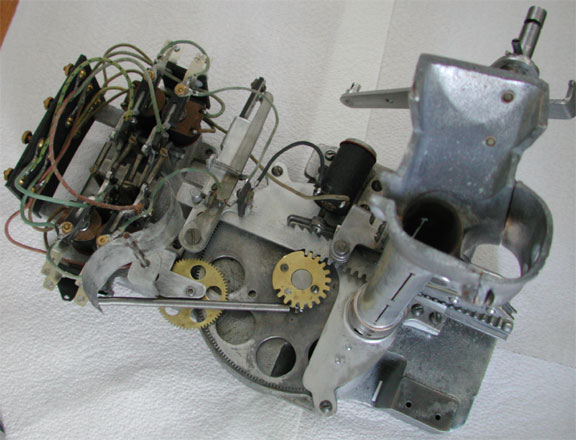Jennings Sportsman (pinball) Payout Mechanism

(mouse over the buttons to see the steps or "PLAY" to see the animation)
Additional Information
See also the introduction, objectives and part naming diagram


(mouse over the buttons to see the steps or "PLAY" to see the animation)
See also the introduction, objectives and part naming diagram